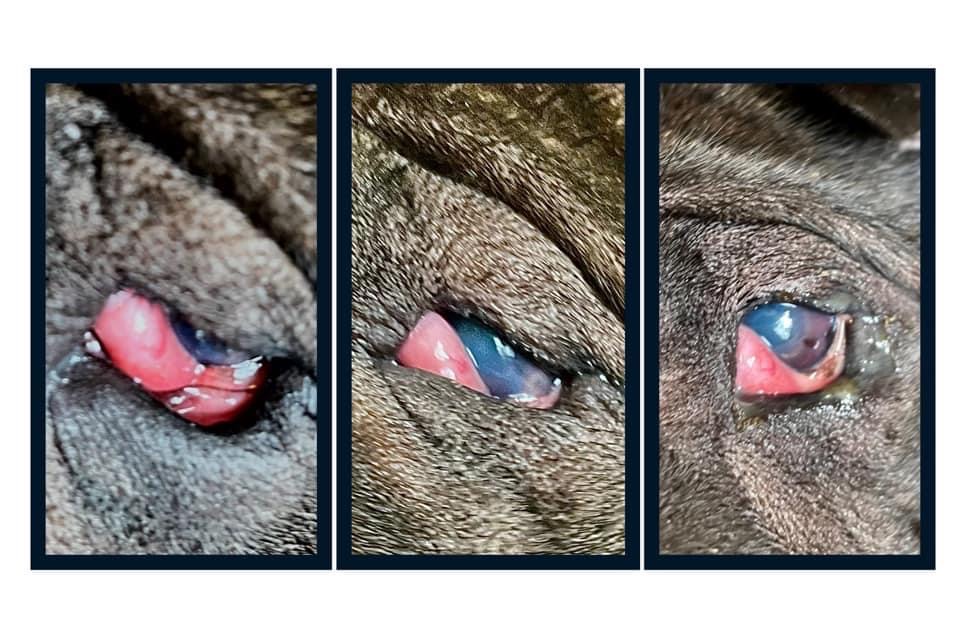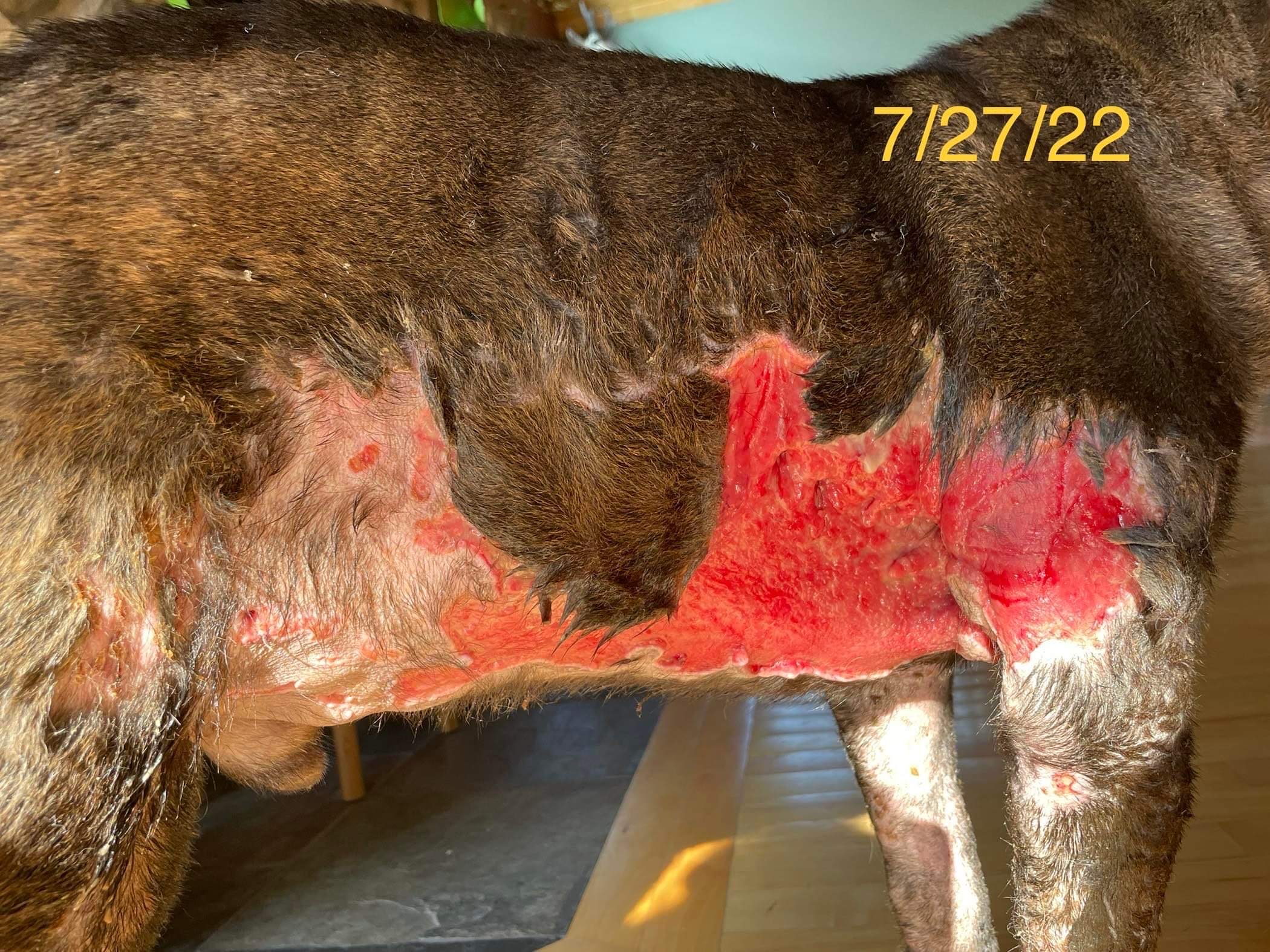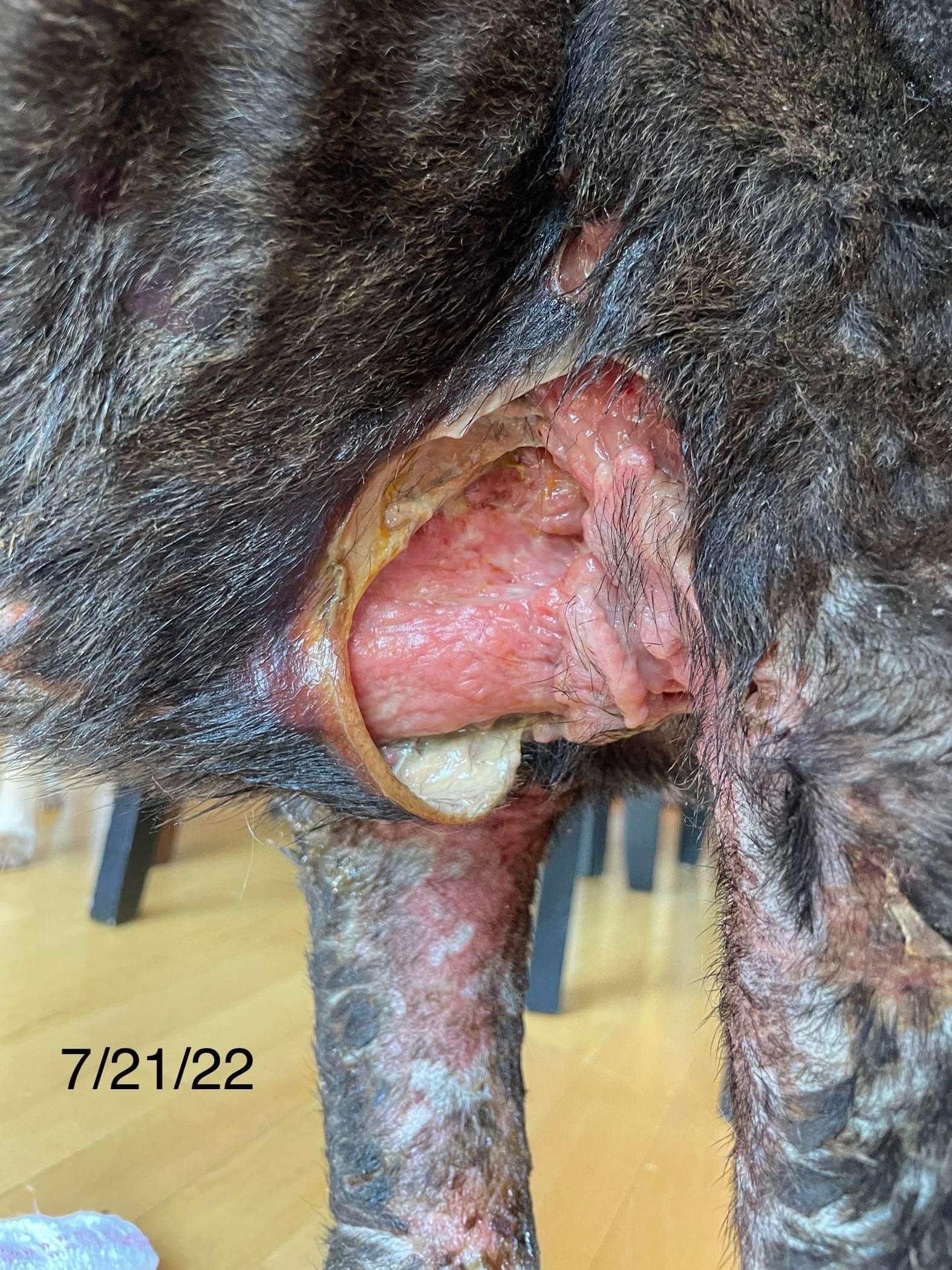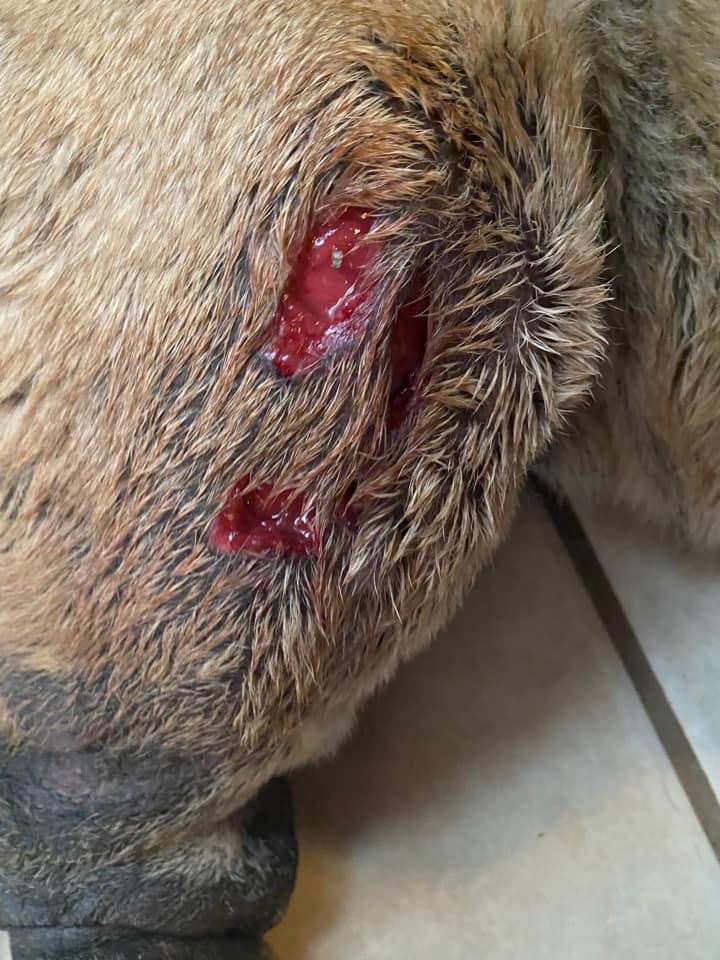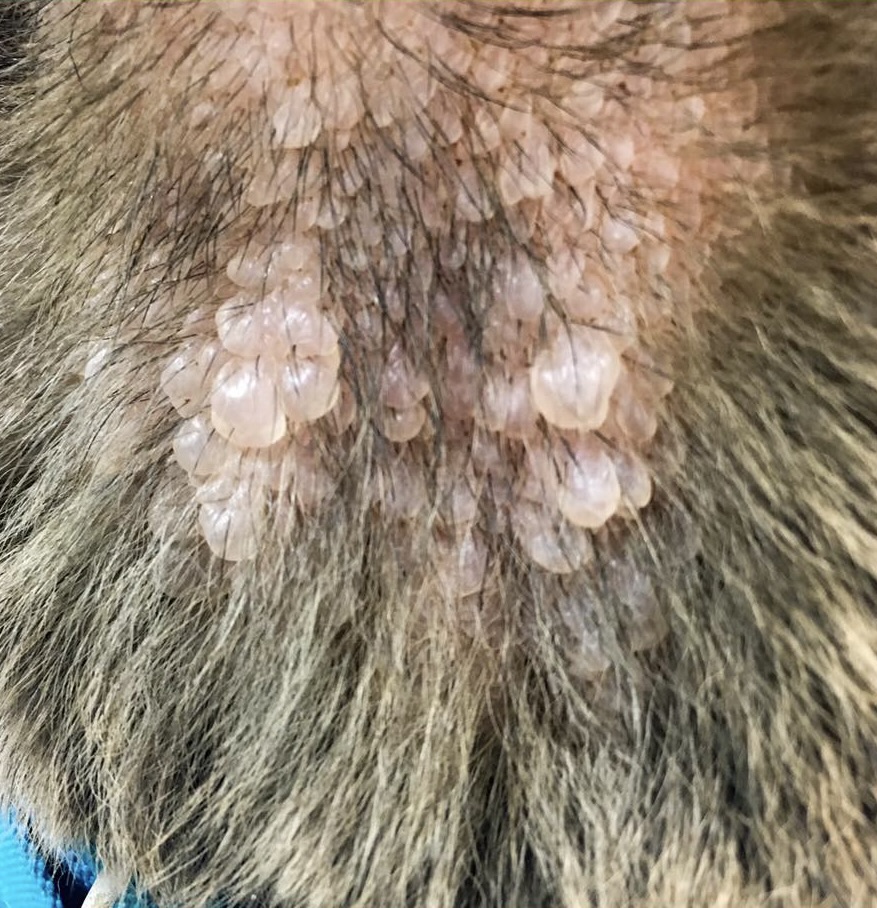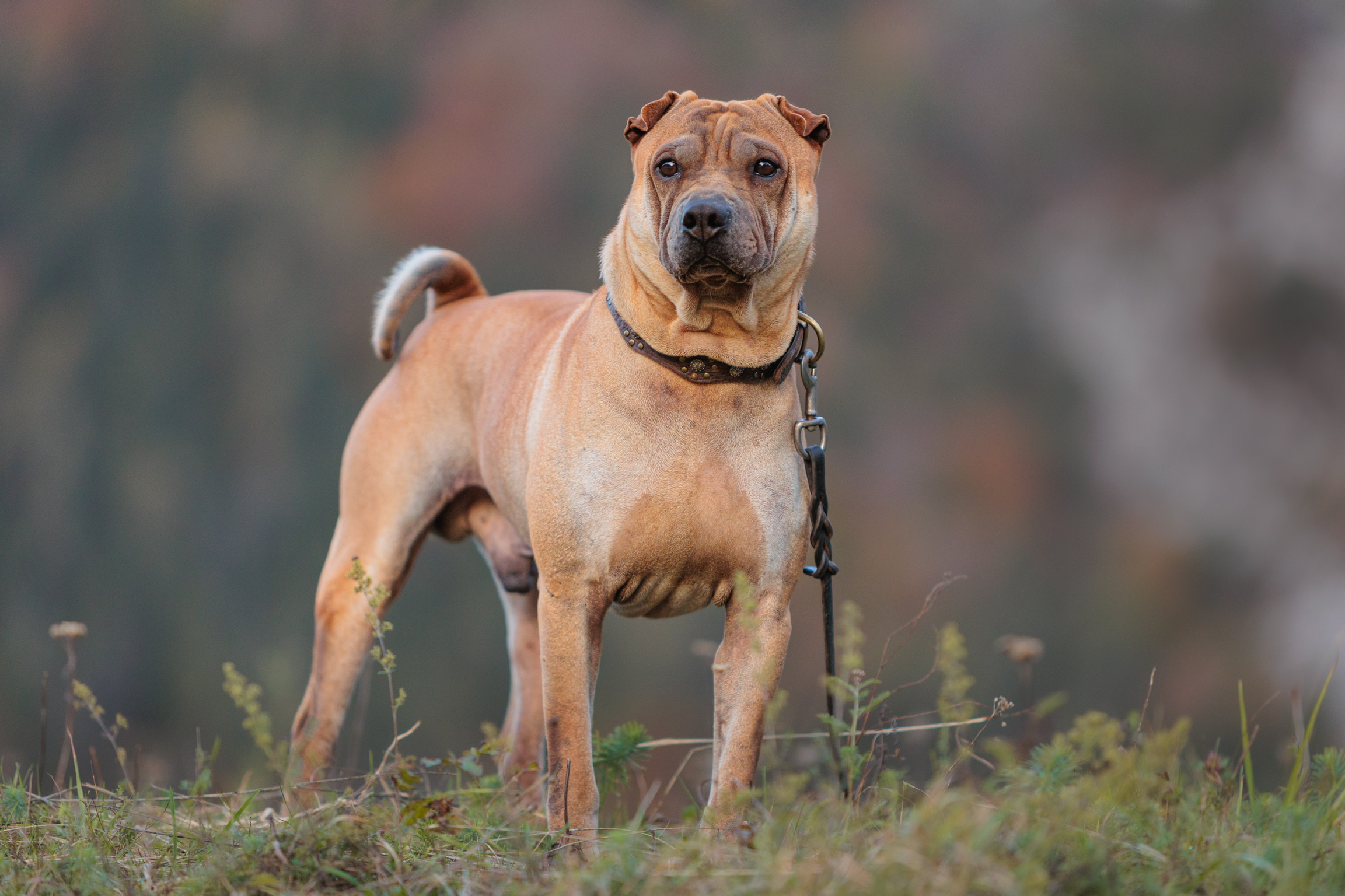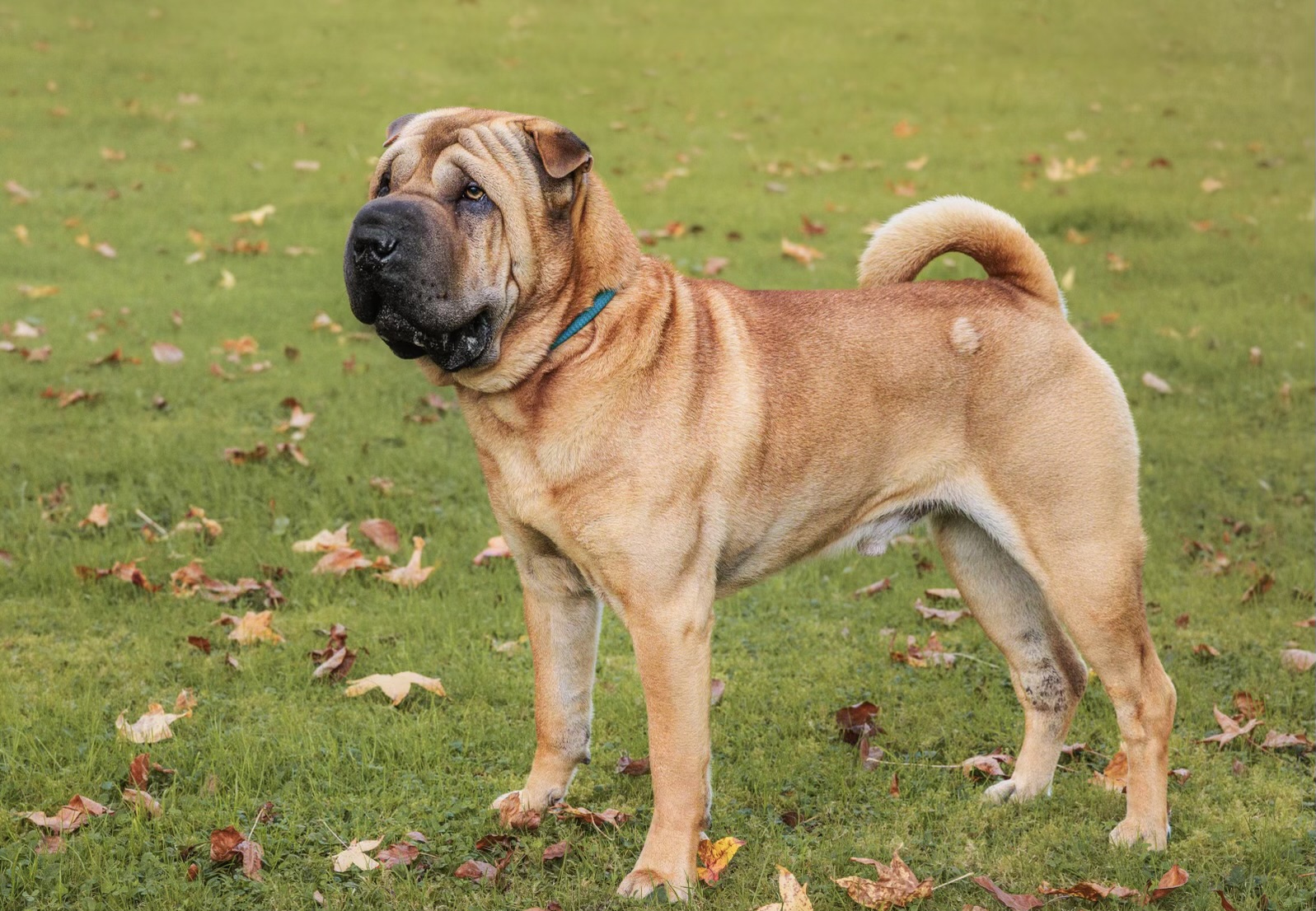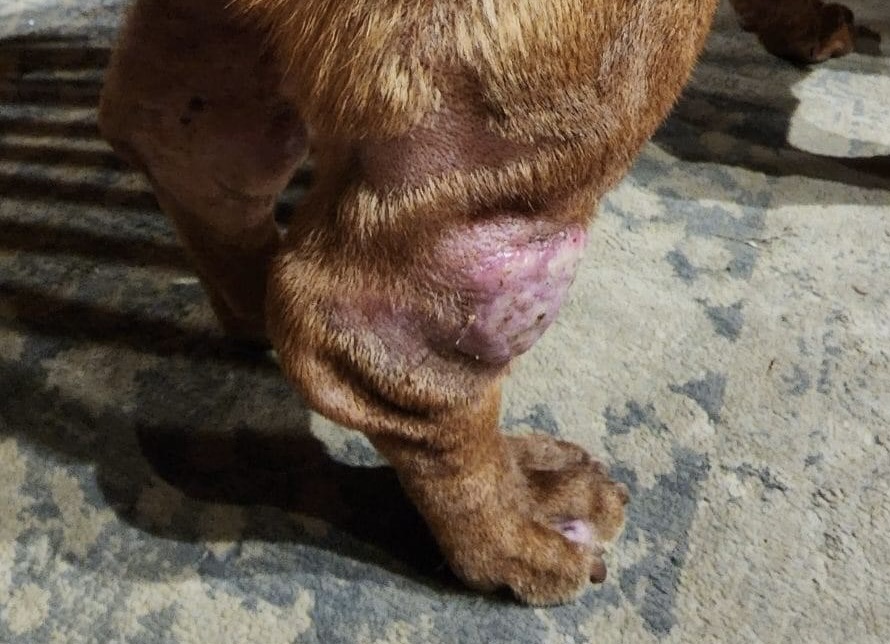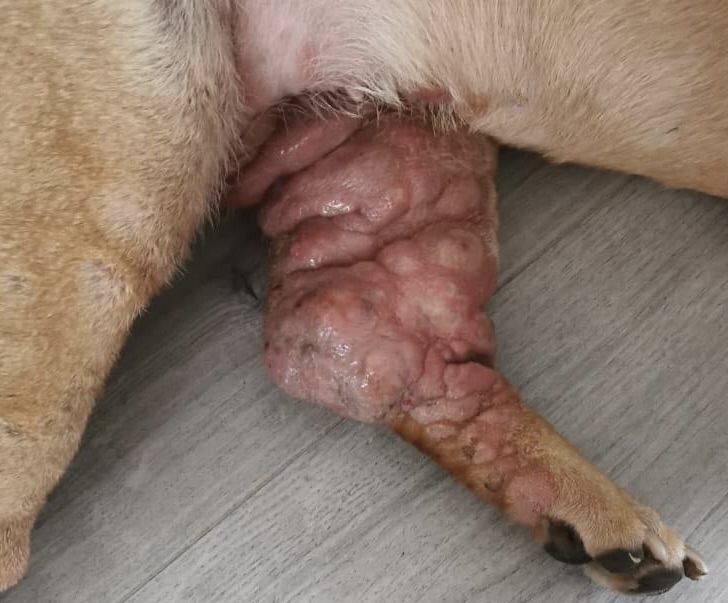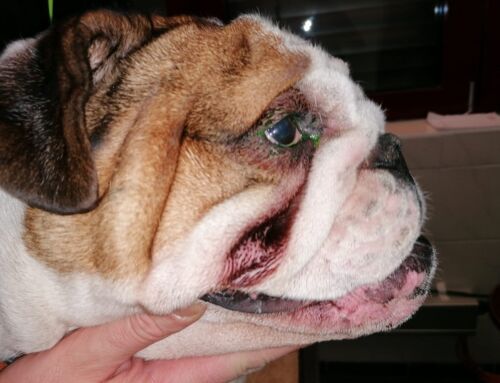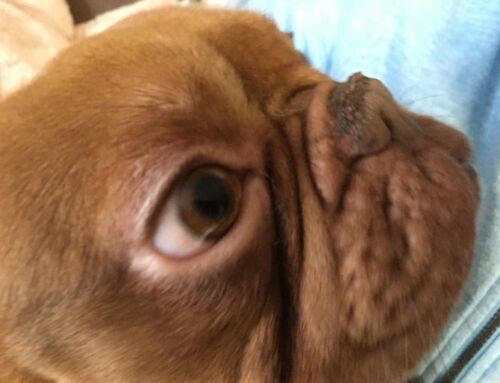Fact Sheet Dog Breed Shar Pei
Species: Dog
Breed: Shar Pei
QUEN-Fact Sheet Nr. 21-EN
Status: 09.05.2023
Species: Dog
Breed: Shar Pei
QUEN-Fact Sheet Nr. 21-EN
Status: 09.05.2023
1. Description of the animals
FCI breed standard* Nr. 309
https://www.fci.be/de/nomenclature/SHAR-PEI-309.html
External appearance and critical features required by the standard:
The height at the withers of the Shar-Pei is given as 44 to 51 cm in the breed standard. It is further described as a medium-sized, lively, compact dog with a square build and a short loin. Skin folds on the skull and withers, small ears, and a muzzle that has been compared to a hippopotamus. The dogs have a short, rough and bristly coat. The length of the hair varies between 1 to 2.5 cm. Shar Pei do not have an undercoat.
According to the breed standard, the characteristic skin folds of the Shar Pei should be present in moderate form on the skull, withers and base of the tail. On the rest of the body, they are „highly undesirable“ in adult dogs. Breeding for the thick, heavily wrinkled skin comes with some health issues. Therefore, external features such as: “Lips and upper muzzle area are well padded. A skin bulge at the base of the nose is permissible” to be viewed critically because it is caused by a pathological change in the skin.
The „fat muzzle“ desired by the FCI can only be achieved through increased hyaluronan production.
The original Chinese standard reads: The snout is reminiscent of a (Chinese) roof tile, with a characteristic slender bone structure. A meaty muzzle and lips are unacceptable.
The selection for ears that lie close to the head can also be associated with an increased tendency to diseases of the external auditory canal. Increased hyaluronic acid production leads to increased colonization with yeast fungi in the ears and skin folds. The breed’s smaller ear canals favor this.
*In Germany the TierSchG and the TierSchHuV are legally binding for the assessment of the individual animal.
2.1 Picture 1

Bonemouth Shar Pei from China.
Picture: QUEN-Archiv
2.1 Picture 2

Meatmouth Shar Pei from Europe.
Picture: QUEN-Archiv
More pictures can be found here (click on picture):
3. Problems/syndromes that may be present in the breed
From several problems occurring in this breed and possible diseases, the most important ones are described here. It should be noted: Up to now there is no official data on the frequency of diseases that actually occur.
Autoimmune diseases
- Shar Pei AutoInflammatory Disease (SPAID)
All single and double genetic carriers can become ill.
Prevalence: No official data known. According to Scandinavian pet insurers, 23% of all Shar Pei will visit a vet for SPAID issues at some point in their lives.
Gastrointestinal diseases
- Hiatal hernia
Prevalence: No official data available.
Skin diseases
- Acute febrile neutrophilic vasculitis
Prevalence: very rare but very serious and distressing for the dog.
- Atopic dermatitis
Prevalence: more common, but no official data available.
- Cutaneous mucinosis
Prevalence: very common in single and double genetic carriers. There is still no reliable data on the extent of health impairments in dogs, but there are indications of other breed-related health problems.
- Generalized juvenile demodicosis
Prevalence: No official data known.
Hormonal diseases
- Hypothyroidism
Prevalence: common, but no official data available.
Musculoskeletal Disorders
- Elbow dysplasia
- Hip dysplasia
Metabolic Diseases
- Hypocobalaminemia (Vitamin B12 deficiency)
Prevalence: The literature contains information on the frequency of Vitamin B 12 deficiency in Shar Pei between 50% and 80%.
Neoplastic diseases
- Mast cell tumor
Prevalence: frequently diagnosed
Eye diseases
- Entropion
Prevalence: According to OFA, 39.4% of all Shar Pei will be affected by entropion in their lifetime, ranking ahead of the Neapolitan Mastiff of all breeds.
- Primary glaucoma and/or lens luxation (POAG/PLL)
Prevalence: Monogenic defect. Of 1300 SP tested, 4.5% are double carriers and will become ill. 39.7% single carriers and 55.8% are free.
- Prolapse of the nictitating gland (Cherry Eye)
Prevalence: More common, no official data available.
Respiratory diseases
- Brachycephalic Obstructive Airway Syndrome (BOAS)
Although the Shar Pei is not a brachycephalic breed, some Shar Pei suffer from a similar set of symptoms caused by narrowing of the airways from thickened mucous membranes. The cause here is again the increased storage of hyaluronic acid, which leads to swelling of the tissue. In the affected dogs, this leads to reduced performance, poor heat tolerance and an increased risk of anesthesia, as in brachycephalic syndrome. In individual cases, an operative correction in the area of the upper respiratory tract may be necessary.
Prevalence: no reliable data are available because BOAS is rarely diagnosed as a single diagnosis.
4. Other breeds or animal species that may be affected
Hiatal hernia
Other dog breeds: English and French bulldogs.
Acute febrile neutrophilic vasculitis
There are several primary vasculitides that are breed-associated (e.g. in Scotch terriers and in German shepherds).
Cutaneous mucinosis
Cutaneous mucinosis is mainly described in Shar Pei. Occasionally also in Doberman Pinscher, Shetland Sheepdog and Labrador Retriever. Cutaneous mucinosis can also occur in humans and rarely in cats and brown hens.
Generalized juvenile demodicosis
Pug, English and French Bulldog, Terrier, Doberman and German Shepherd.
Hypocobalaminemia (Vitamin B12 deficiency)
Giant Schnauzer, Border Collie, Australian Shepherd, Beagle.
Mast cell tumor
Boxers (and all other brachycephalic breeds), Dachshunds, Bernese Mountain Dogs, Labrador Retrievers.
Entropion
St. Bernard, Great Dane, English Cocker Spaniel, Basset Hound, Pekingese, English Bulldog and various hunting dog breeds.
Primary glaucoma
American Cocker Spaniel, Basset Hound, Chow Chow, Boston Terrier, Wire Fox Terrier, Norwegian ElkHound, Siberian Husky, Cairn Terrier, and Miniature Poodle.
Lens luxation
Terrier breeds such as short-haired and wire-haired Fox Terriers, Sealyham Terriers, Cairn Terriers, Welsh Corgi and Jack Russell Terriers, as well as the Tibetan Terrier and Border Collie.
Prolapse of the nictitating gland
Neapolitan Mastiff, English Bulldog, Italian Mastiff, Lhasa Apso, American Cocker Spaniel, Beagle, Shih Tzu, French Bulldog, Great Dane, Cane Corso and English Bulldog.
Brachycephalic Obstructive Airway Syndrome (BOAS)
In addition to breeds with a tendency to tissue laxity, increased wrinkling and thickening of the mucous membrane of the throat, such as St. Bernards, short-headed pedigree dogs such as Boston Terriers, English and French Bulldogs, Boxers and Pugs are particularly affected.
5. Clinical signs and disease value of the typical defects mentioned above: Significance/impact on the physical/psychological well-being (burden) of the defect in the individual animal and classification in a burden category *
*The individual breeding-related defects are assigned to different burden categories (BC) depending on their degree of severity. The overall burden category is based on the most severe defect found on the individual animal. The BC system as a further development based on the Swiss model is currently still being developed, so the BC values given here are to be regarded as provisional.
Shar Pei AutoInflammatory Disease (SPAID)
Physical: The syndrome shows clinical heterogeneity. Signs may include familial Shar Pei fever, arthritis (inflammation of the joints), breed-specific secondary dermatitis (vesicular hyaluronic disease), otitis (ear infection), and amyloidosis. In addition, affected dogs often experience loss of appetite, an increased need to drink, as well as vomiting, diarrhea and weight loss.
Shar Pei Fever: Characterized by recurring episodes of high fever and inflammation.
Amyloidosis: Deposits of the insoluble fibrillar protein amyloid lead to amyloidosis. Amyloidosis is a collective term for various diseases in which proteins form poorly soluble, pathogenic deposits. This leads to functional failures and various symptoms. In some cases, individual organs such as the kidneys, more rarely the liver, are affected and lead to dysfunction of the corresponding organ. In other cases, they can affect the entire organism.
Psychological: The dogs suffer from the (sometimes sudden) symptoms of the disease described above.
The painful arthritis caused by the inflammatory processes sometimes severely impairs the movement of the dogs.
Dogs with fever episodes are often lethargic and often unable to get up.
Dogs with otitis are visibly uncomfortable, scratching their ears which can lead to further injury/infection.
Burden category: 3
Hiatal hernia
Physical: The most common clinical signs are regurgitation, hypersalivation, vomiting and growth retardation. A hiatal hernia can lead to reflux esophagitis and/or megaesophagus. Cardiac arrest can occur when cardiopulmonary function is compromised by a hernia.
Psychological: The congenital hiatal hernia is usually noticed at the age of just a few months and can only be treated surgically. This affects the undisturbed growing up phase of a young dog.
Burden category: 3
Acute febrile neutrophilic vasculitis
Physical: The disease begins acutely, with the sudden development of systemic signs such as fever, pain, tachycardia, and tachypnea. Subsequently, skin lesions develop, including palpable hemorrhages and skin vesicles, subcutaneous edema, detachment of the skin from the subcutaneous tissue, and finally ischemic necrosis and ulceration of the skin and subcutaneous tissue in the severely affected areas. Acute febrile neutrophilic vasculitis also quickly leads to thrombosis.
Psychological: Dogs suffering from acute neutrophilic vasculitis are described as lethargic. They appear depressed and eat and drink little. They feel uncomfortable and are in pain.
Burden category: 3
Cutaneous mucinosis
Physical: Excessive accumulation of mucins in the skin leads to thickening of the same. This thickening gives the Shar Pei its characteristic desired appearance. Blistering may occur in some cases. The vesicles can be local, multifocal, or diffuse and range from mild to severe. It can also cause folliculitis, hair loss, redness, and itching.
It must be assumed that most if not all Shar Peis are affected by cutaneous mucinosis to some degree. Mucin vesicles have also been seen in western „meatmouth“ Shar-Pei who do not carry genetic traits, albeit isolated and sporadically.
Mucin vesicles are not described in the original bonemouth Shar Pei population.
In severe forms of cutaneous mucinosis, secondary diseases such as intertrigo, bacterial infections and entropion due to facial wrinkles regularly occur. These can lead to a significant impairment of the state of health.
Psychological: Primary cutaneous mucinosis is described as not painful, but the vesicles and other secondary conditions can be painful and disabling.
Burden category: 3
Hypocobalaminemia (Vitamin B12 Deficiency) (Metabolic Disease)
Physical: Some dog breeds, such as the Giant Schnauzer or the Shar Pei, are vitamin B12 deficient. Vitamin B12 deficiency in the Shar Pei can lead to long-lasting and serious gastrointestinal disorders such as diarrhea, vomiting and/or weight loss. Other effects can be disorders of blood formation and neurological disorders.
Psychological: Dogs with hypocobalaminemia suffer from the physical symptoms and there may be behavioral changes, particularly anxiety and nervousness.
Burden category: 1
Mast cell tumor
Physical: Mast cell tumors often appear in Shar Pei by the fourth year of life. Individual tumors can be soft to firm and located in the dermis or subcutis. The skin is often red (erythematous). Some resemble urticarial swellings, and some are very diffuse and aggressively growing (often on the limbs). Mast cell tumor is the most common malignant skin tumor in dogs. If a dog suffers from a mast cell tumor, it is often not just the skin that is affected. Metastases in the lymph nodes as well as in the spleen or liver occur. In addition, the increased release of histamine by the degenerated mast cells increases gastric acid production. Gastrointestinal ulcers can result.
Psychological: Depending on the location and stage, itching, wound healing disorders, a tendency to bleed, nausea and vomiting, loss of appetite and weight, bloody stools due to gastrointestinal ulcers or swollen lymph nodes can occur and significantly affect the dog’s well-being.
Burden category: 3
Entropion
Physical: The lid margin of the eye is partly or completely curved inwards, which can lead to trichiasis and irritation of the surface of the conjunctiva and the cornea. In many cases, the entropion is due to the shape of the skull and eye socket, as well as the amount of skin on the head. Most cases occur in the first year of life, with some severely affected cases presenting as early as 2-6 weeks of age.
Psychological: Irritation to the cornea of the eye caused by the hairs pointing inwards significantly affects the well-being and behavior of the affected dogs.
Burden category: 2-3
Prolapse of the nictitating gland
Physical: The lacrimal gland, which normally lies behind the nictitating membrane, is exposed. This causes irritation. Due to its red and rounded appearance in the inner corner of the eye, this clinical picture is also called cherry eye. If left untreated, the prolapse often leads to chronic conditions, inflammation, infection and injuries to the nictitating gland and possible secondary corneal injuries.
Psychological: The courses of a prolapse of the nictitating gland described above can lead to restrictions in well-being due to a foreign body sensation and/or pain.
Burden category: 2
Brachycephalic Obstructive Airway Syndrome (BOAS)
Physical: A brachycephalic head shape is part of the breed standard and therefore BOAS can also occur in the Shar Pei. The main congenital anomalies are stenotic nostrils, excessively long soft palate in relation to head shape, and tracheal hypoplasia. The constant narrowing and obstruction of the airways makes breathing difficult. The ever-increasing effort to breathe leads to secondary changes that further narrow the airway, including a collapse of the larynx (the glottis, the opening to the windpipe).
BOAS causes snoring, wheezing, mouth breathing, shortness of breath with rapid breathing and gasping, and can lead to collapse and death. Dogs with BOAS cannot exercise even moderately, are very prone to heat stroke, and have constant trouble sleeping.
Psychological: Even mildly affected dogs can have trouble sleeping and are often unable to walk long distances due to their impaired breathing.
Burden category: 3
Elbow dysplasia
Physical: Progressive skeletal disease that may include osteoarthrotic changes, joint incongruity, fragmented medial coronoid process, osteochondritis dissecans of the trochlea, and isolated anconeus process.
Elbow dysplasia can lead to severe lameness. In addition, affected dogs experience pain when moving and altered posture of the affected limb.
Psychological: Affected dogs suffer from the pain and the restriction of motor skills with the associated behavioral restrictions.
Burden category: 2-3
Hip dysplasia
Physical: Complex developmental disorder characterized by joint lability and osteoarthritis in one or both hip joints.
Often no or only minimal clinical signs are visible. Affected dogs less than one year old experience hip instability and overload of some joint areas. Pain is mainly caused by straining or stretching of the ligaments, joint inflammation and microfractures of the hip socket. Lameness can occur.
Gait disturbances and muscle atrophy in the hind limbs can be seen in older dogs. Gait abnormalities include stiffness, decreased step height, shortened stride length, bunny hopping, difficulty standing up, climbing stairs, and jumping over obstacles are typical clinical signs. They suffer from chronic pain due to osteoarthritis.
Psychological: If movements are no longer pain-free and unrestricted, the dogs suffer from the restriction.
Burden category: 2-3
6. Heredity, genetics, known gene tests, if applicable, average coefficient of inbreeding for the breed (COI), if applicable, Generic Illness Severity Index
Shar Pei AutoInflammatory Disease (SPAID)
The wrinkled phenotype is the result of excessive hyaluron deposition in the skin. The reason for this lies in an increased expression of HAS2 (HA-synthesizing gene) on chromosome 13. The mutation is present in several copies (at least two) in the Shar Pei. The more copies there are, the more hyaluronic acid is formed and stored in the tissue, which leads, among other things, to the „padded“ snout.
The HA gene, when fragmented, can act to trigger an immune response, stimulating sterile fever and inflammation. Thus, strong selection for skin phenotype seems to favor a pleiotropic mutation that predisposes these dogs to periodic fever syndrome.
A HAS2 genetic test is available.
Another mutation in the MTBP gene (also located on chromosome 13), which is linked to inflammatory processes via the MTBP-MDM2 signaling pathway, is associated with the occurrence of SPAID, the inheritance is stated to be autosomal dominant with variable penetrance.
A genetic test for the MTBP variant is available.
Cutaneous mucinosis
Cutaneous mucinosis occurs as a result of a genetic defect in hyaluronic acid metabolism. Increased expression of hyaluronic acid synthases 2 leads to accumulation of hyaluronic acid. This is due to the gene sequence described above on chromosome 13, which is found in multiple copies in the Shar Pei, while other dog breeds only have one copy.
Hiatal hernia
The cause of congenital hiatal hernia is not yet clear.
Acute febrile neutrophilic vasculitis
The etiopathogenesis of the disease is so far unclear.
Hypocobalaminemia (Vitamin B12 deficiency)
A region on chromosome 13 contains one or more genes thought to be responsible for hypocobalaminemia. So far, however, only markers are known, a causal variant could not be identified for the Shar Pei, so a genetic test is not available (as of April 2023).
Mast cell tumor
Mutation in the tyrosine kinase KIT gene (protooncogene). In addition, there may be a connection between the HAS2 gene duplications and the aggressiveness of the mast cell tumors in Shar Pei.
The duplications upstream of HAS2 lead to the breed-typical, desired thickening and folding of the skin in all Shar Pei. However, this also – undesirably – triggers the hereditary periodic fever syndrome in this dog breed, probably inseparably. It is believed that fragments of the increased hyaluronan in the skin trigger the inflammation. This is then a breed-specific breeding defect with the coupling of the breed-defining characteristic and a disease, at least according to the current status. The effect can be further intensified by multiplying the mutation in the Meatmouth Shar Pei, which have particularly impressive physiognomies.
In fact, Shar Pei also get many mast cell tumors of the skin, especially at a young age, apparently also associated with it and accumulated. You can also see significantly more mast cells in the skin, apparently as a result of the increased hyaluronan storage, and the increased number of these cells alone could speak for the accumulation of tumors. But there are other connections, because mast cell tumors are characterized by isolated, free-swimming tumor cells. While these tumor cells tend to proliferate in other dogs in the „dry forest“ and have to make their own edema, the Shar Pei’s tumor cells bathe in a massively flooded swamp system from the outset and are quickly washed away, i.e. distributed. We see that very often in diagnostics and that is what makes the tumor so dangerous in this breed. There may be other connections that are not known. Nothing is known about direct genetic interactions of HAS2-associated mutation and molecular emergence/initiation of MCT.
Average breed coefficient of inbreeding (COI)
Feragen: 7,46% (N=20 -two of them from China with values below 1%)
Embark: 16% (N=253)
7. Diagnosis – Necessary examinations before breeding or exhibition
a. Diagnosis
Shar Pei AutoInflammatory Disease (SPAID)
HAS2 genetic test and genetic test for the MTBP variant as a source of information. Further diagnosis is currently only possible by excluding other diseases.
Amyloidosis
Detection of amyloid in a tissue sample using Congo red staining. Tissue is obtained by excision, but mostly by biopsies from organs (heart, kidneys, intestines, rectum, skin, liver, etc.) or by aspiration of subcutaneous fat tissue. If amyloid is histologically proven via the green birefringence in polarized light, an immunohistochemical classification of the amyloidoses can be carried out if necessary with the help of specially produced antibodies.
Hiatal hernia
The diagnosis of a hiatus hernia can be made by means of an X-ray with administration of a contrast medium. X-ray shows a round soft-tissue opacity or gas-filled viscerum in the caudodorsal thorax overlying the diaphragm. Additional fluoroscopy can detect an intermittent form.
Acute febrile neutrophilic vasculitis
Histopathology.
Cutaneous mucinosis
A histopathological examination is recommended for diagnosis, which can visualize the separation or reduction of dermal collagen fibers as a result of mucin accumulation.
Hypocobalaminemia (Vitamin B12 deficiency)
Blood test (determination of serum cobalamin and methylmalonic acid).
Mast cell tumor
Diagnosis is made by cytological examination of a smear and histopathological examination.
b. Necessary examinations before breeding or exhibition
- Adspection / inspection of the individual animal: Visual appearance gives first indication of possible underlying defects, e.g. indication of visible mucinosis. Dogs with visible mucinosis should always be excluded from breeding and exhibition.
- Genetic test for HAS2 and MTBP (SPAID): single and double carriers of both defect genes located on chromosome 13 are to be excluded from breeding and exhibition.
- Genetic test for primary glaucoma and/or lens luxation (POAG/PLL). Frequency: once.
- X-ray: hip joint dysplasia. Frequency: one time from 20 months of age.
- X-ray: elbow dysplasia. Frequency: one time from 12 months of age.
- Skin: Adspection for the presence of skin diseases (Acute febrile neutrophilic vasculitis, Atopic dermatitis, Cutaneous mucinosis). Frequency: yearly.
- Veterinary eye examination: entropion, primary glaucoma and/or lens luxation (POAG/PLL), cherry eye. Frequency: yearly.
- DNA examination to determine the genetic inbreeding coefficient.
8. Necessary or possible orders from a veterinary point of view
Decisions about breeding or showing bans should be made in connection with the burden category (BC). Depending on the severity and findings, the most severe finding, i.e. the finding that affects the animal the most, and its classification into one of the burden categories (BC) can be decisive for a breeding ban, or the assessment of the context if there are many individual breeding-related defects. If necessary, the individual coefficient of inbreeding of an animal should also be taken into account.
a) necessary orders
Breeding ban for animals with visible mucinosis, single and double carriers of the two defect genes located on chromosome 13 (HAS2 and MTBP gene test) as well as in the presence of defects/traits of burden category 2 or 3.
Prohibition of exhibition for all animals with defects of the burden category 2 or 3. With animals, that carry defects/characteristics, which are to be assigned according to the Swiss model to the burden level 2 or 3, neither may be bred, nor may these animals be exhibited. The exhibition of these animals is to be prohibited in accordance with §10 TierSchHuV, in addition in the light of Article 20a GG (if necessary in connection with § 16a Abs.1 S.1 TierSchG).
b) possible orders
Order for further diagnostics if there is a suspicion of the existence of further breeding-related defects
Please note:
Measures by the competent authority must be recognizably suitable for averting future damage to the affected animal and/or its offspring. With regard to the type and depth of processing of orders and breeding bans, decisions are always made on a case-by-case basis at the discretion of the competent authority, taking into account the findings on the animal found on site and other circumstances.
9. General assessment of animal welfare law
From a veterinary point of view, dogs with the defects/syndromes described above are to be classified as Qualzucht (torture bred breed) in Germany according to §11b TierSchG.
It should be noted that a breeding ban does not only apply if animals are bred with which themselves have characteristics relevant to torture breeding (trait carriers), but also if it is known or must be known that an animal used for breeding passes on traits that can lead to one of the disadvantageous changes in the offspring (carriers; in particular animals that have already produced damaged offspring; cf. Binder § 5 ÖTSchG to Z 1).
– An important indication of a hereditary defect is that a disease or behavioral deviation occurs more frequently in related animals than in the overall population. The fact that the breed or population has proven to be viable over a long period of time does not speak against damage (cf. Lorz/Metzger § 11b paragraph 12).
Justification:
According to §11b TierSchG (Germany) it is forbidden to breed vertebrates if breeding findings indicate that as a result of breeding the offspring will e.g.
- hereditary parts of the body or organs are missing or unfit for the species-appropriate use or are reshaped and this causes pain, suffering or damage (§ 11b Para. 1 No. 1 TierSchG) or
- hereditary behavioral disorders associated with suffering occur (§ 11b Para. 1 No. 2 a) TierSchG) or
- the husbandry is only possible with pain or avoidable suffering or leads to damage (§ 11b Abs. 1 Nr. 2 c) TierSchG).
Breeding ban for animals with defect characteristics of the burden category 3: Shar Pei AutoInflammatory Disease (SPAID), Acute febrile neutrophilic vasculitis, Cutaneous mucinosis.
The detailed rationales for each defect will follow shortly.
Extensive legal assessments and/or expert opinions, if already available, can be made available to veterinary authorities for official use on request.
10. Relevant jurisdiction
Germany: Not yet.
Austria: Not yet.
Switzerland: Not yet.
Netherlands: According to the The Animal Keepers Decree Article 3.4. 1 and 3.42.a and 3.4.2b it is not allowed to breed with animals with harmful features. So breeding extreme Shar Peis would not be allowed.
11. Order example available?
Not yet.
12. Bibliography/ References/ Links
At this point, only a selection of the defects described above and, if applicable, general literature on breed-related defects in dogs is given. Extensive literature lists on the scientific background will be sent exclusively to veterinary authorities on request.
Note: The description of health problems associated with the defects, for which there is not yet sufficient scientific knowledge, is made against the background of the corresponding experiences of experts from veterinary practice and/or university institutions, as well as publicly freely accessible databases or publications by animal insurances and therefore come from different evidence classes.
Since breeding and exhibitions are international these days, the information usually does not only refer to the prevalence of defects or traits in individual associations, clubs or countries.
Sources:
Beaucamp, E.; Beaucamp, S. (2021): Erlaubnistatbestände und -verfahren in der tierschutzrechtlichen Praxis. Nach § 11 Tierschutzgesetz. 1. Auflage. Stuttgart: Verlag W. Kohlhammer (Rechtswissenschaften und Verwaltung Handbücher).
Binder, R. (2019): Das österreichische Tierschutzrecht. Tierschutzgesetz und Tierversuchsgesetz 2012 mit ausführlicher Kommentierung. 4. Auflage. Wien: Edition Juridica in der MANZ’schen Verlags- und Universitätsbuchhandlung GmbH (Juridica Praxiskommentar).
Gough, A.; Thomas, A.; O’Neill, D. (Hg.) (2018): Breed Predispositions to Disease in Dogs and Cats. Chichester, UK: John Wiley & Sons, Ltd.
Breed Predispositions to Disease in Dogs and Cats, 3rd Edition | Wiley
Hirt, A.; Maisack, C.; Moritz, J. (2023): Tierschutzgesetz. Kommentar. Mit TierSchHundeV, TierSchNutztV, TierSchVersV, TierSchTrV, EU-Tiertransport-VO, TierSchlV, EU-Tierschlacht-VO : Kommentar. 4. Auflage. München: Verlag Franz Vahlen.
Kluge, H.-G. (Hg.) (2002): Tierschutzgesetz. Kommentar. 1. Aufl. Stuttgart: Kohlhammer (Rechtswissenschaften und Verwaltung Kommentare).
Lorz, A.; Metzger, E. (2019): Tierschutzgesetz. Mit Allgemeiner Verwaltungsvorschrift, Art. 20a GG sowie zugehörigen Gesetzen, Rechtsverordnungen und Rechtsakten der Europäischen Union : Kommentar. 7., neubearbeitete Auflage. München: C.H. Beck.
Österreichisches Tierschutzgesetz (2022): Bundesgesetz über den Schutz der Tiere (Tierschutzgesetz – TSchG) https://www.ris.bka.gv.at/GeltendeFassung.wxe?Abfrage=Bundesnormen&Gesetzesnummer=20003541
Schweizer Tierschutzgesetz (2022): Tierschutzgesetz (TSchG) https://www.fedlex.admin.ch/eli/cc/2008/414/de
TierSchG (2021): Tierschutzgesetz. Deutschland.
https://www.gesetze-im-internet.de/tierschg/BJNR012770972.html
TierSchHuV (2021): Tierschutzhundeverordnung
https://www.gesetze-im-internet.de/tierschhuv/BJNR083800001.html
TSchV (2022): Tierschutzverordnung Schweiz.
https://www.fedlex.admin.ch/eli/cc/2008/416/de
Work, M., Scudder, C., Bergum Hjellegjerde, K., Dunning, M., Gajanayake, I., Kent, A., Tintle, L., Sparks, T.; Allerton, F. (2023) A survey on Shar Pei autoinflammatory disease in the United Kingdom. J Small Anim Pract. https://onlinelibrary.wiley.com/doi/full/10.1111/jsap.13602
VTSchZ (2014): Verordnung des BLV über den Tierschutz beim Züchten. Schweiz.
https://www.fedlex.admin.ch/eli/cc/2014/747/de
Sie können diese Seite hier in eine PDF-Datei umwandeln:
